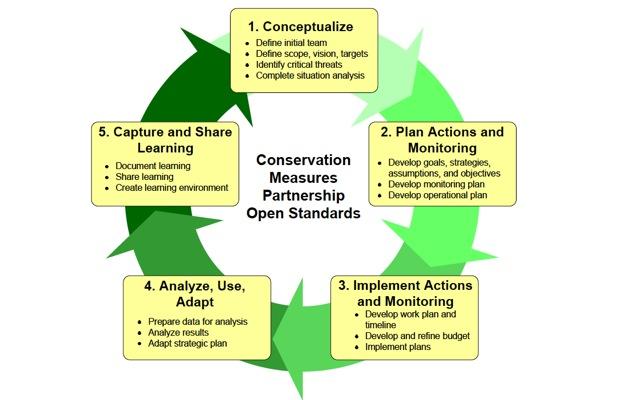Open Standards
Open Standards seek to build a common language and framework for decision making and prioritization of conservation issues.

The Open Standards for the Practice of Conservation were first published in 2004 by the Conservation Measures Partnership, a group of conservation organizations with a mission to develop “principles and tools to credibly assess and improve the effectiveness of conservation actions.” Open Standards are similar to the principles of Conservation Action Planning (CAP), a process used by The Nature Conservancy in the Puget Sound region for more than ten years.
The Open Standards seek to build a common language and a framework for decision making and prioritization of conservation issues, and to offer a way of measuring impacts, and are used at many different scales— from ecosystems like small reserves to the entire Puget Sound basin. The Puget Sound Partnership adopted the Open Standards as a guiding framework for much of their work in 2009.

